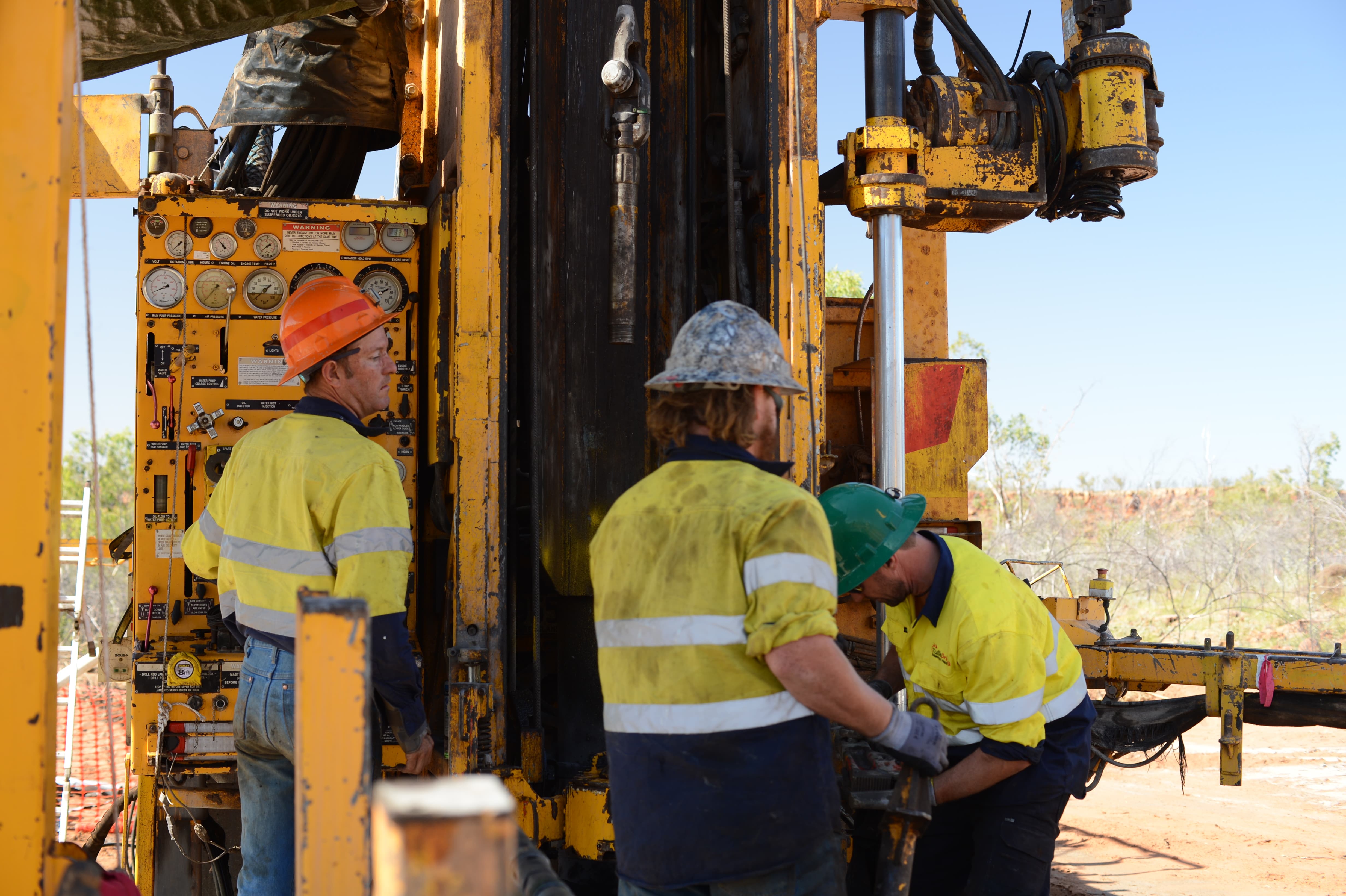SUMMARY
- Significant breakthrough at Bottletree with confirmation of a concentrically zoned porphyry style hydrothermal alteration and copper and molybdenum mineralisation system characterised by features typically recognised within the wall rocks near porphyry copper-molybdenum intrusions, extending from surface to at least 850m down-dip depth.
- Central alteration system is a broad (>1km diameter) outer propylitic alteration shell, zoning inward to several inner propylitic and potassic alteration zones, which reflects increasing temperature of hydrothermal fluids westwards and with depth towards the centre of the Bottletree Prospect.
- Western-most hole BTDD010 and deeper part of BTDD005 potentially drilled within close proximity to a targeted porphyry core.
- Discovery of high-grade molybdenum mineralisation associated with late-stage tonalite porphyry intrusions with up to a spectacular 5.2% Mo (1m assay) encountered in BTDD010.
- At least two distinct mineralising events recognised, with early-stage copper-gold- molybdenum mineralisation associated with prograde potassic alteration and a late-stage molybdenum-dominant event likely associated with a separate porphyry intrusion.
- The concentrically zoned propylitic-potassic alteration and the style of Cu-Mo veins recognised in the wall rocks are typical exploration pathfinders used to vector towards blind porphyry mineralisation. As typical of porphyry systems, the prograde propylitic- potassic alteration is overprinted by retrograde phyllic alteration with which, most prominent Mo mineralisation is associated.
- BTDD010 drilled to 1,065m down-hole depth, encountered regularly-spaced copper- mineralised veins over almost entire length of core. Most of the mineralisation within the hole is considered to represent low grade leakage from the central porphyry-style source. The presence of copper mineralisation over such a large area provides an early indication of the potential scale of the central porphyry system.
- A 270m-wide interval of copper mineralisation near the bottom of Hole 10 and 850m down dip from surface, considered to have intersected wall rock hosted, structurally-controlled copper mineralisation within potassic, grading out to inner propylitic alteration, close to the source of the alteration and mineralisation.
- Exploration focussed primarily on vectoring to the central porphyry potassic core in the search for a mineralised porphyry Cu-Mo intrusion. A separate program will delineate the extent of mineralisation within the wall rocks to determine the potential for an economic Wallrock Porphyry style Cu-Mo deposit such as in the Cadia Valley, NSW.
Superior’s Managing Director, Peter Hwang commented:
“With an enormous amount of work completed over the last six months at Bottletree, we are especially pleased to see several significant outcomes being delivered at this very early stage of exploration drilling.
“The independent assessment of Bottletree as a copper-gold-molybdenum porphyry system by internationally recognised porphyry-epithermal expert, Dr Greg Corbett, provides a solid foundation for the project and together with the identification of several porphyry pathfinders, we feel greater confidence in discovering a nearby mineralised porphyry core.
“The several deep holes that were drilled in the last program have demonstrated the extensive effects of a porphyry alteration system with associated copper mineralisation that has been traced for at least one kilometre, both in horizontal and down-hole extent.
“Of particular interest is the newly discovered late-stage molybdenum mineralisation system that has so far, demonstrated ability to carry spectacular molybdenum grades of up to 5.2% Mo. With molybdenum spot prices currently above USD60,000 per tonne, Bottletree’s molybdenum potential could be transformational in terms of its overall economic potential.
“We are also pleased to have incidentally extended the wall rock hosted “out of porphyry” alteration and mineralisation from surface to at least 850 metres down-dip depth. With only four holes in this zone, we are yet to test its full potential.
“The recently completed program has provided almost 5,000 metres of valuable information and enabled significant breakthroughs that have implications for the greater Greenvale Copper Project. Importantly, the information validates Greenvale as a newly recognised porphyry province containing several porphyry systems with Tier-1 deposit potential. This province extends for at least 65 kilometres, includes at least five known or suspected additional porphyry prospects and is 100 percent owned by the Company.
“We are now even more confident that the province represents the northern remnants of the New South Wales Ordovician-age Macquarie Arc, which hosts the world-class Cadia and Ridgeway porphyry deposits. The discovery of a copper-molybdenum porphyry system in this part of Queensland is remarkably significant, as metallogenically-fertile Ordovician-age porphyries similar to those in NSW were not previously known to exist in Queensland.
“Although chasing copper grade is not the focus at this stage of the program, each of Holes 4, 5, 6 and 10 have confirmed extensive dispersion of copper mineralisation at Bottletree. We expected large intervals in Holes 5, 6 and 10 to be barren, but instead, the holes demonstrated that low grade copper veining, typical of porphyry-altered wall rock zones, is present over almost the entire 933 metre, 732 metre and 1,065 metre respective lengths of those holes.
“The value and significance of the project have now been elevated considerably and with only eight porphyry-targeted holes drilled so far, we believe we are on the pathway to a significant porphyry discovery.
“As our confidence and excitement at Bottletree grows amidst an inevitable increasing global demand for copper, it is strategically prime and necessary to double our exploration efforts by enlivening our most advanced porphyry prospect, Cockie Creek. We are investing to strengthen our teams and resources to drive an even stronger value presence in the future metals sector.”

